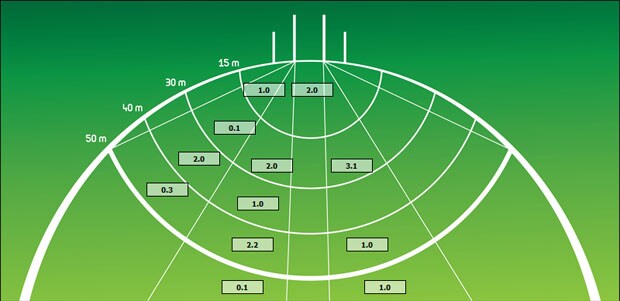The 39-point margin was flattering according to some, who believed the Roos should have lost by more.
The fact North kept the margin was so close can perhaps be credited to the defensive group, who battled manfully against the general flow.
While Essendon went inside the forward 50 on 60 occasions and had 57.7 per cent time in the forward half, it managed a relatively low 24 scoring shots.
Despite the pure weight of numbers proving too much to handle in the end, it is important to highlight the efforts of the defenders to keep North in the game as long as they did.
Their combined defensive efficiency of 93 showed in Essendon’s struggle to score once inside 50.
| Team | Score % inside 50 | Round 1 AFL average | Differential |
| Essendon | 30% | 38.4% | -8.4% |
Whether it’s just a one-game example or a snapshot of something larger, it was interesting to note the scoring shots North forced Essendon to take.
With 10 scoring shots registered from 40 metres or further out from goal, the defensive group forced Essendon into trickier shots than the basic stat sheet would indicate. Yet the conversion rate from distance suggested the Bombers were too good on the night.

Friday night was also the first chance to see how the interchange cap would be implemented.
In the first week of the split round, the cap veered from barely used (Gold Coast, 75 and Carlton, 84) to almost exceeded (Fremantle, 118 and Collingwood, 117).
North trended towards the conservative side, using 87. When the changes are broken down into 10-minute blocks, a noticeable spike emerges over the middle part of quarters.
| Time of interchange | 0-10 minutes | 10-20 minutes | 20+ minutes |
| North Melbourne | 25 | 37 | 25 |

